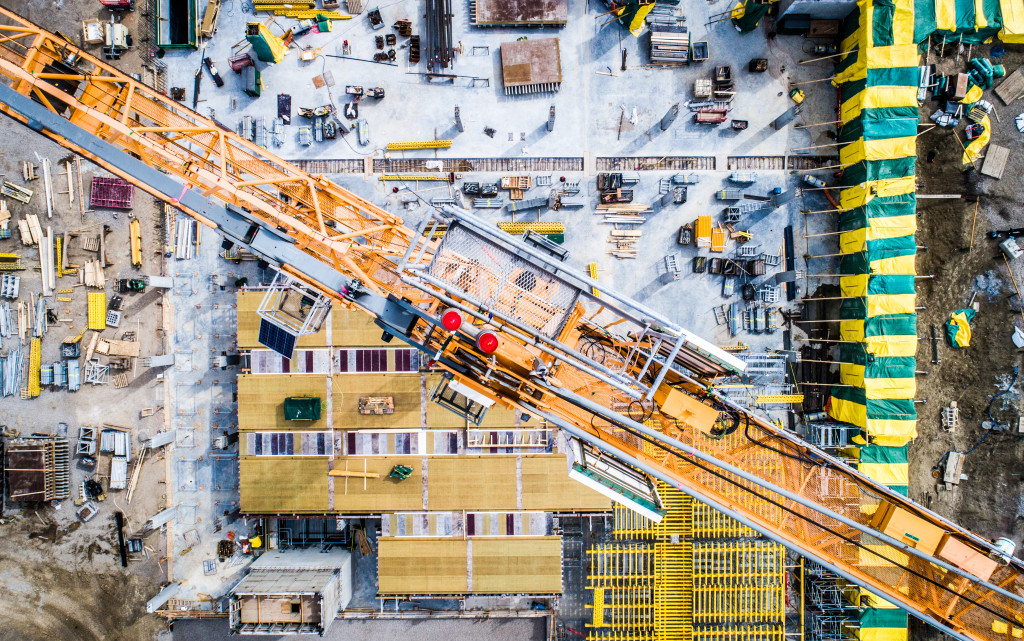- Technology is significantly enhancing safety and efficiency in the construction industry, with numerous digital solutions available to mitigate risks and improve productivity.
- Implementing safety technologies like drones, wearable tech, and autonomous equipment can prevent accidents, monitor worker health, and facilitate safer and more efficient operations.
- Cloud-based safety management systems and virtual reality training can provide valuable insights and simulate high-risk scenarios, fostering a more proactive, data-driven approach to safety management.
- Successful adoption of technology in construction safety requires a commitment from management, effective training, a culture open to change, and regular updates to keep pace with technological advancements.
As a professional in the construction industry, you know the importance of safety in the workplace. Now, imagine coupling that with the power of technology. Technology adoption allows you to make significant strides in enhancing safety measures, turning the construction site into a safer, more efficient, and productive environment. This perspective is the key to unlocking unprecedented safety and efficiency.
Monitoring and Keeping Workers Safe
Monitoring and keeping workers safe is a top priority on every construction site. With the advancements in technology, it has become easier to track and monitor the safety of workers, ultimately reducing accidents and injuries. Of course, investing in reliable fall protection equipment forms a cornerstone in ensuring safety at the construction site.
This equipment, ranging from harnesses to guard rails, is designed to prevent falls — a leading cause of fatalities in the construction industry. Integrating advanced technology into these safety gear makes it possible to enhance their effectiveness and provide real-time data for improved safety management.
For example, sensors embedded in the equipment can monitor a worker’s movement and height, alerting supervisors and the wearer if they get into a potentially dangerous situation. Consequently, this proactive approach reduces the risk of accidents and fosters a safety culture, reassuring workers that their well-being is a priority. The investment, therefore, extends beyond the immediate financial outlay, preserving life and improving productivity in the long run.
Evaluating Readiness to Adopt Safety Technologies
Before adopting safety technologies in your construction site, evaluating your organization’s readiness to embrace this transformative step is crucial. Here are some tips:
Leveraging Technology Solutions

To leverage technology effectively in enhancing construction site safety, it’s essential to understand the available solutions in the market. Innovations such as drones, wearable technology, and building information modeling (BIM) are revolutionizing safety management in construction. Drones offer a bird’s eye view of the site, enabling supervisors to inspect hard-to-reach areas and identify potential hazards.
On the other hand, wearable tech can monitor workers’ vital signs and fatigue levels, providing critical data to prevent accidents caused by exhaustion. Lastly, BIM can forecast potential safety issues during the design phase, allowing for preventive measures to be put in place ahead of time. By understanding these technologies and how they can be integrated into operations, construction businesses can decide on the most suitable solutions for their needs.
Technological Transformation in Construction Equipment
Technological transformation is not only limited to safety equipment but extends to the larger construction machinery and tools. Advancements such as autonomous or semi-autonomous equipment, GPS tracking, and telematics are dramatically changing the construction landscape.
Autonomous equipment can perform tasks that put human operators at risk, such as working at heights or in confined spaces, thereby reducing the potential for accidents. GPS tracking allows for the precise positioning of machinery, enhancing efficiency and reducing the risk of collisions.
Equipment telematics provides real-time data on machine health, allowing for predictive maintenance and reducing downtime. These technologies bring about increased efficiency, improved safety, and significant cost savings, making them an investment worth considering for every forward-thinking construction business.
Improving Safety Levels Through Technology

As you progress in the technological age, the potential to elevate construction site safety through digital solutions becomes increasingly evident. Not only can technology monitor and protect workers, but it can also facilitate data-driven decision-making that proactively addresses hazards.
For instance, cloud-based safety management systems can centralize safety data, providing insights to identify patterns and predict potential risks. This holistic view of safety performance enables a more strategic approach to safety management, allowing for continuous improvements.
Additionally, adopting virtual reality (VR) in training can simulate high-risk scenarios, equipping workers with practical skills in a safe environment. Therefore, it is indispensable for construction businesses to stay updated on the latest safety technologies, proactively incorporate them into their operations, and foster a culture of innovation alongside that of safety. Integrating safety with technology can revolutionize the construction industry, making it safer and more efficient.
Identifying Key Factors for Successful Adoption
A successful adoption of technology in construction safety hinges on several key factors:
- There must be a commitment from management to invest in and prioritize these safety technologies. This should be coupled with appropriate employee training, ensuring they can use and benefit from these advanced tools effectively.
- A culture of openness to change is crucial, as new technologies often require shifts in traditional methods and processes. Introducing innovative safety solutions in a supportive environment can significantly enhance their acceptance and use.
- It’s essential to conduct regular reviews and updates of these technologies, as the tech industry is ever-evolving, with new advancements constantly emerging.
By considering these factors, construction businesses can effectively utilize technological advancements to reinforce safety measures, leading to safer worksites and more efficient operations.
Adopting Digital Construction Safety Tools
With the digital age ushering in various safety tools, construction companies can now adopt digital construction safety tools to enhance worksite safety. These tools, ranging from mobile applications to cloud-based software, offer real-time, accessible safeguarding solutions. For instance, safety inspection apps streamline conducting, recording, and tracking safety inspections.
They allow instant reporting, immediate action on safety issues, and easier compliance with safety standards. Additionally, incident reporting apps enable instant reporting of workplace incidents, accelerating the response time and preventing similar future occurrences.
Digital training tools, on the other hand, offer interactive, engaging safety training, improving knowledge retention and application in real-life scenarios. Thus, by adopting digital construction safety tools, organizations can significantly boost safety levels, foster compliance, and enhance efficiency in their operations.
In conclusion, technology is revolutionizing construction safety, enhancing efficiency and reducing potential risks significantly. It’s time to embrace these digital solutions and prepare your team for this transformative shift. Invest in training, foster a culture of innovation, and prioritize safety. Your commitment to enhancing safety through technology will redefine your construction site operations.




